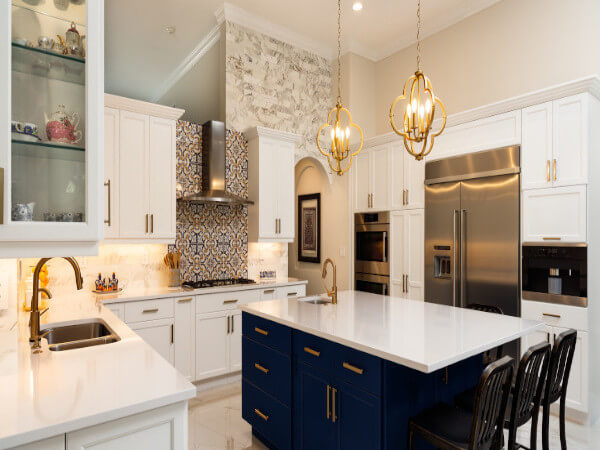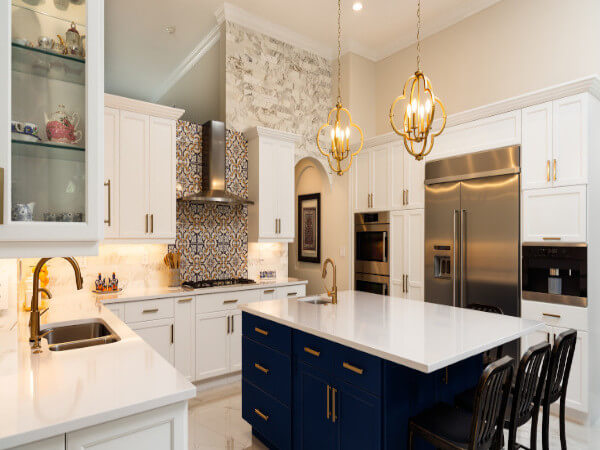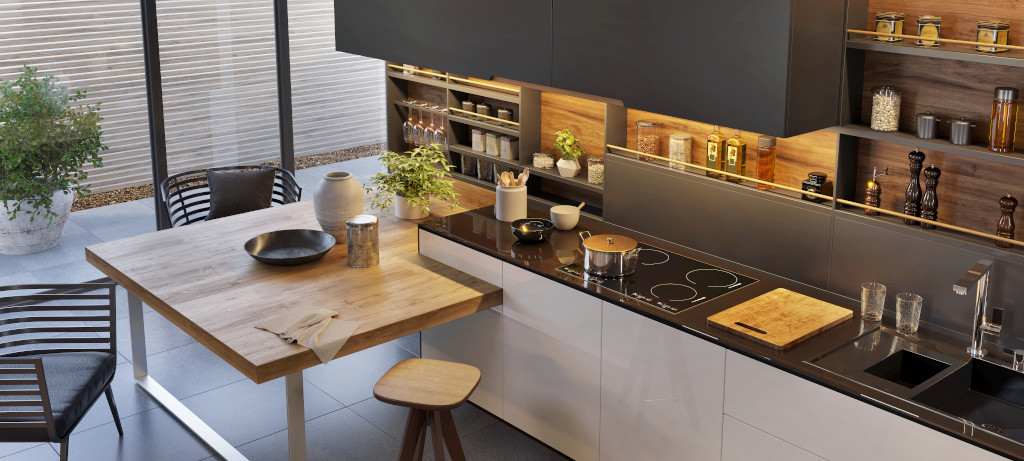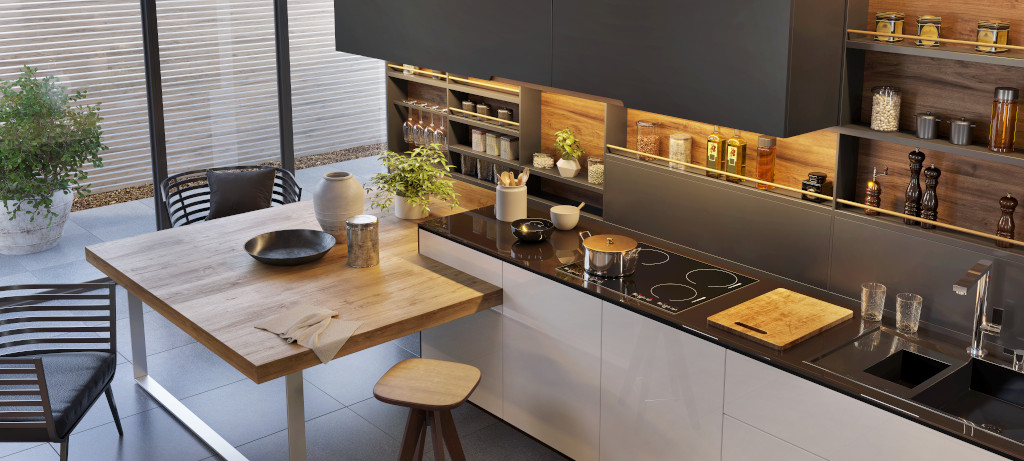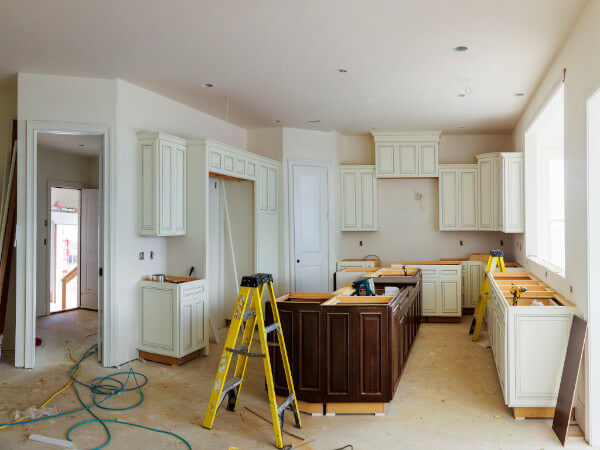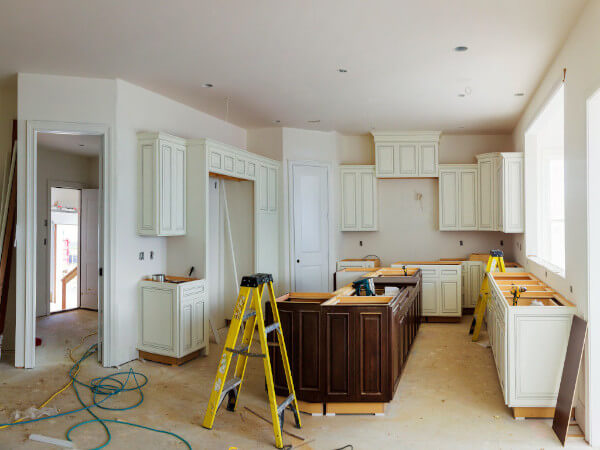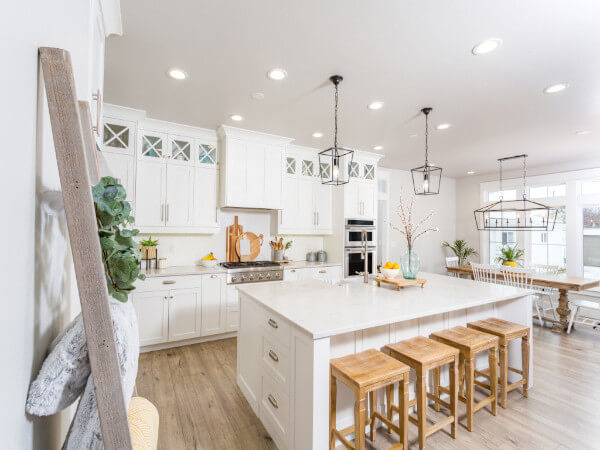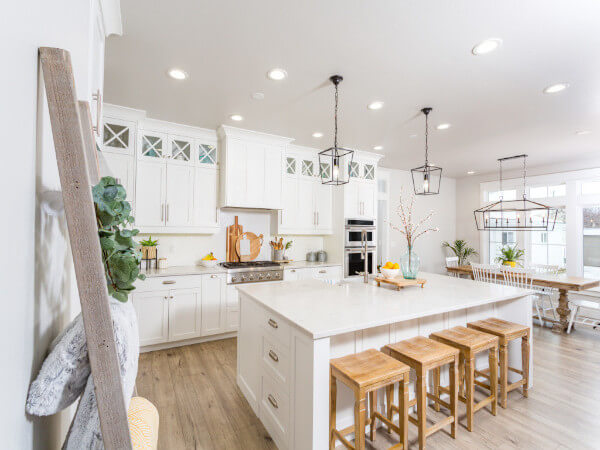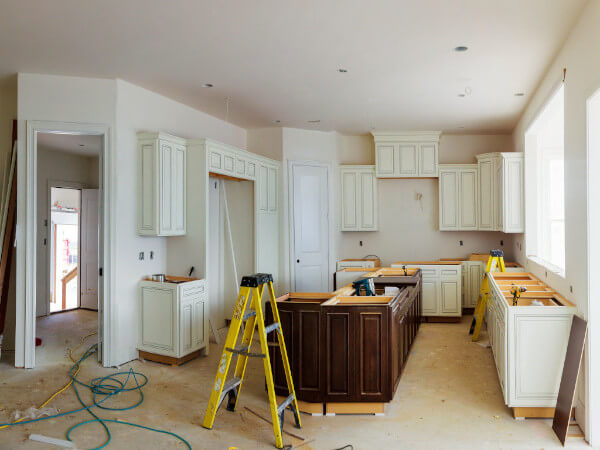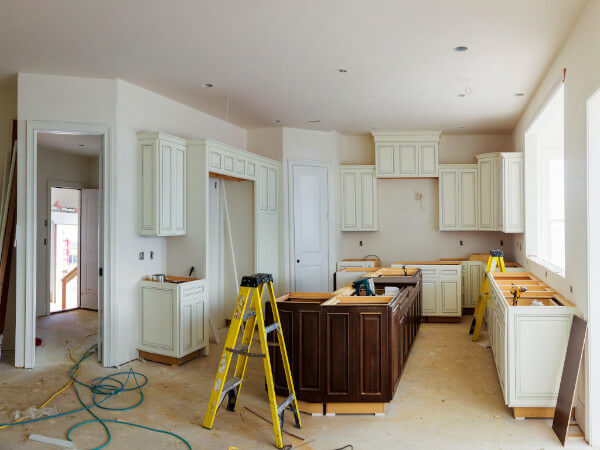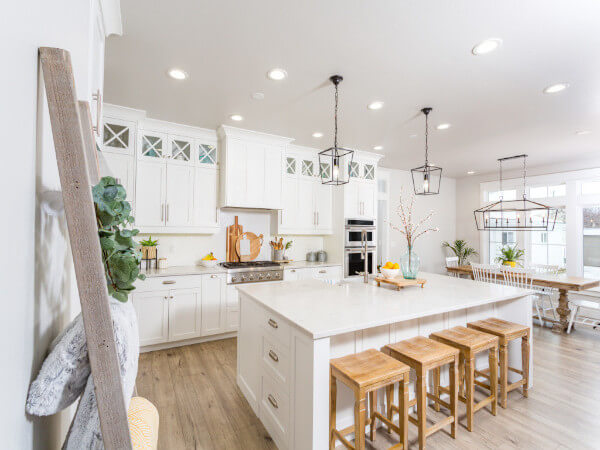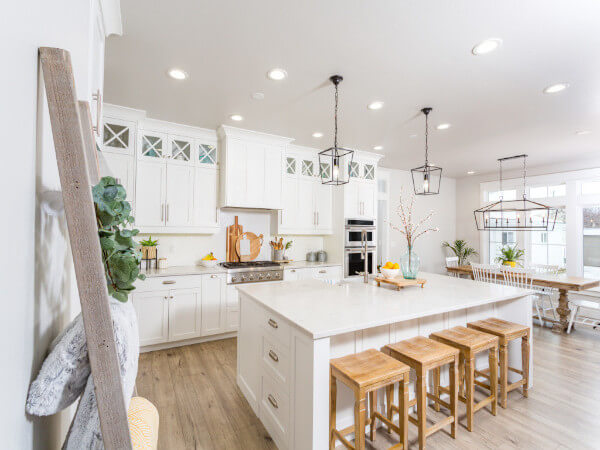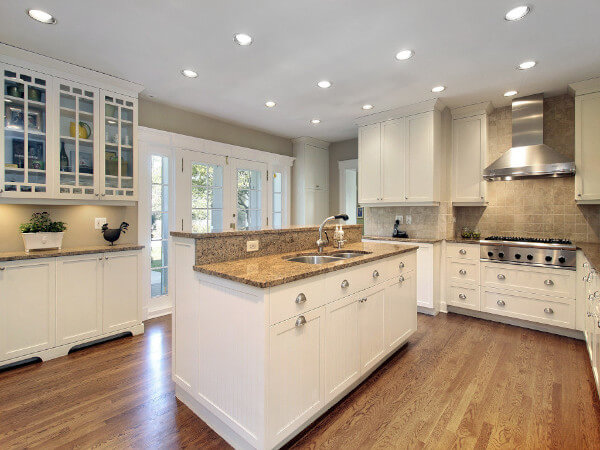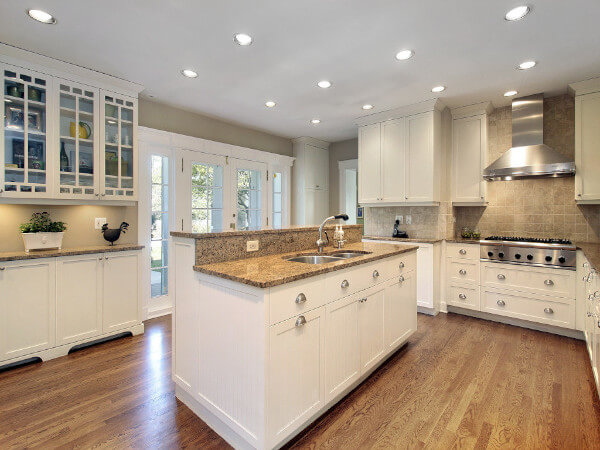>
GOLD
Contrasting Colors
TODD ATKINS
Phil Kean Design Group, Winter Park, FL

30

29

33

31

28

34
Photos: Uneek Image
The objective for the kitchen design team – which included designer Todd Atkins along with architect Phil Kean and interior designer Keri Ferguson – for the 2021 New American Home was to demonstrate how the space could be beautifully designed using a combination of multiple colors and textures.
Cabinets from Plato Woodwork’ INOVAE Classic line are used in contrasting colors of walnut, creamy whites, dark carbon, sparkling champagne and reflective glass in gray. A traditional walnut finish is showcased on the 10′ illuminated walnut hutch, which includes glass-front doors that highlight the contents. Walnut is also used in a chevron pattern on the island cabinetry, interior cabinetry in the TV niche, and custom hood built using a Panasonic 36″ range hood.
The kitchen also features a range of interior storage options, including peg boards, spice racks, utensil dividers and roll-outs. Specialty spaces including a coffee bar and TV niche can be closed off and hidden behind their retractable bi-fold doors.
Modo cabinet hardware from Schaub & Company adds a touch of gold, along with the Kohler Crue Semi-Professional Kitchen Faucet. The faucet is paired with Kohler’s Prolific Undermount Sink.
The Signature Kitchen Suite appliances deliver luxury built-in cooking and refrigeration options. Included are: 48″ Dual-Fuel Range with Sous Vide and Induction, 30″ Double Wall Oven with Steam-Combi and Microwave Oven Drawer, all in stainless steel, as well as 30″ Integrated Panel-Ready Column Refrigerator and Freezer units, and Quadwash Panel-Ready Dishwasher.
To contrast the Engineered Natural Walnut flooring, the designers used a bright white Viatera Quartz from LG Hausys for both the countertops and the backsplash. Idril Sconces in brushed nickel, as well as the Loop Linear fixture in brushed aluminum above the island – all from Kichler – provide illumination.

SILVER
Form & Aesthetic
STEVEN COOPER
Cooper Pacific Kitchens, West Hollywood, CA
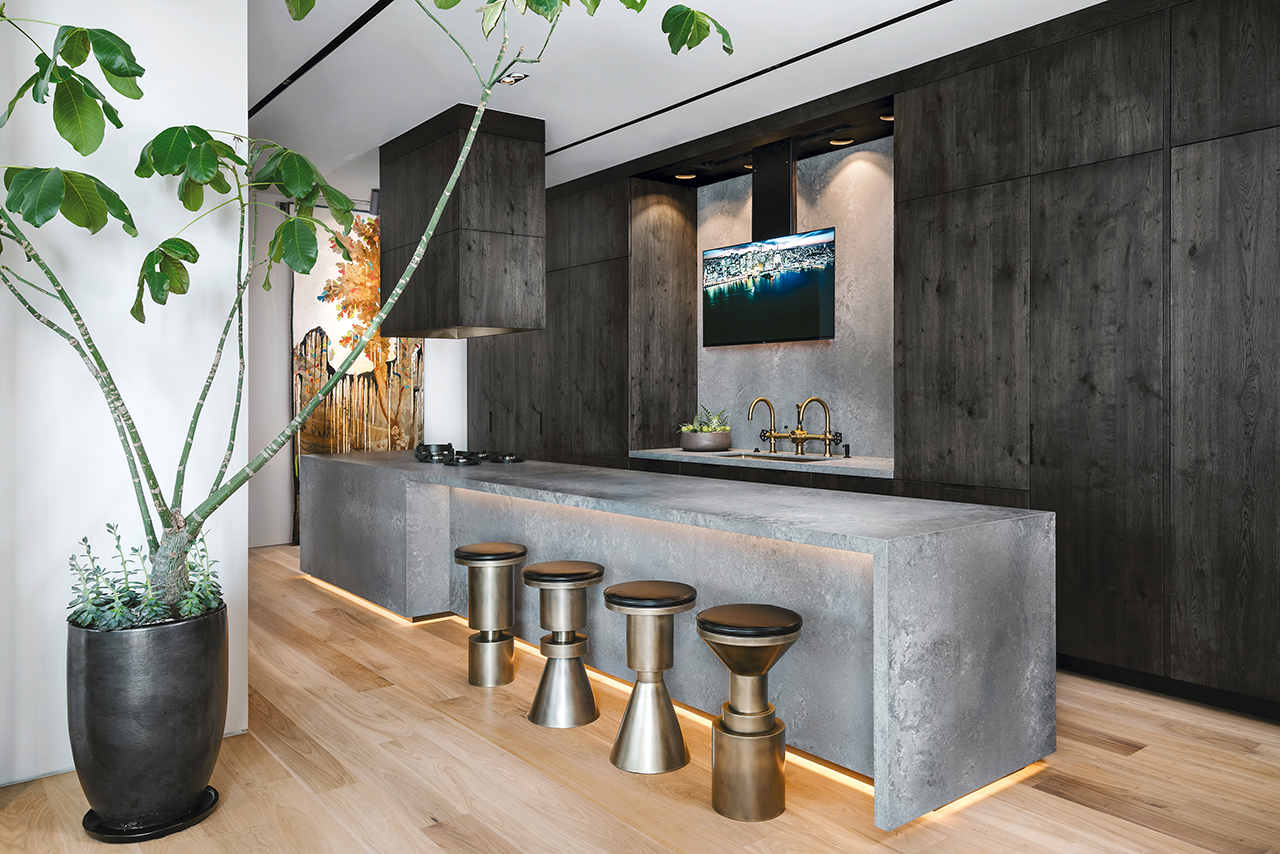
_DSC1209
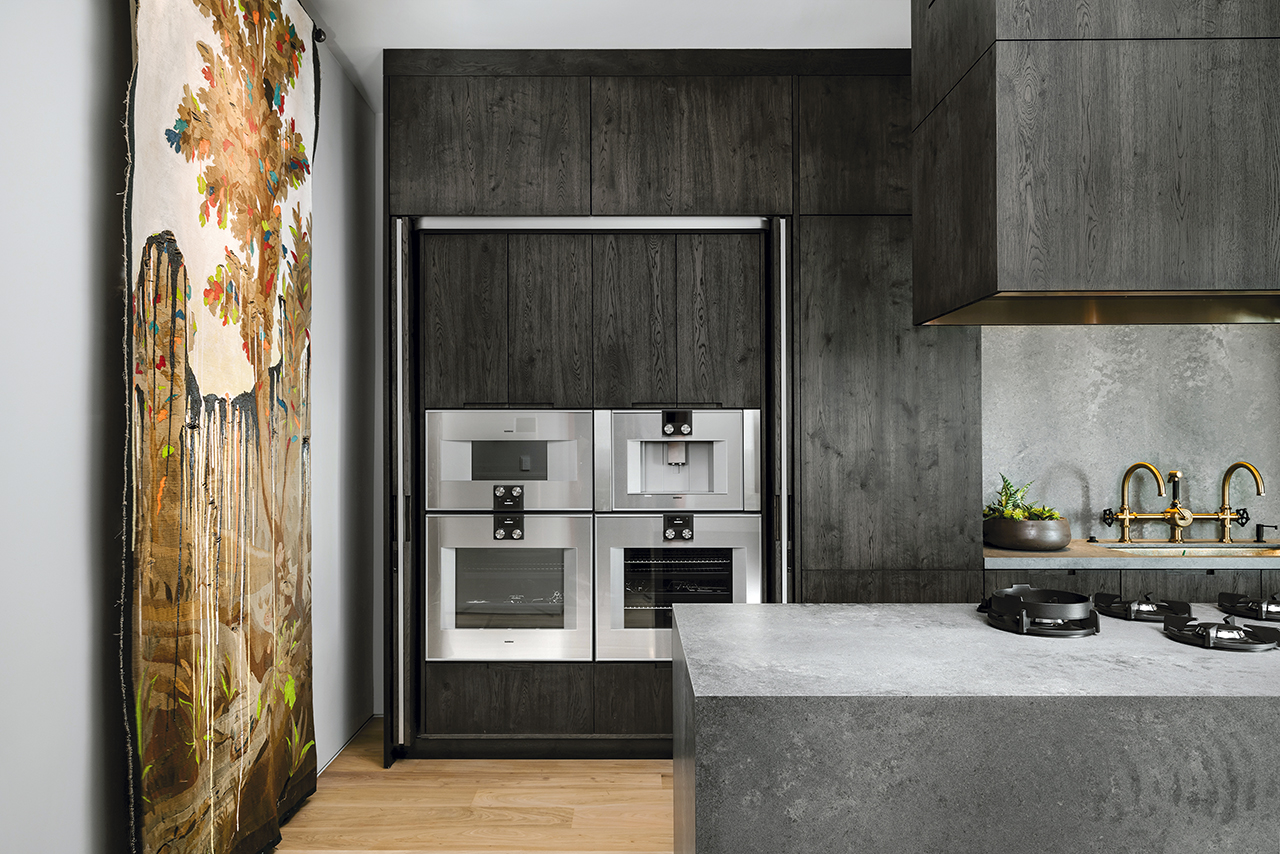
_DSC1146
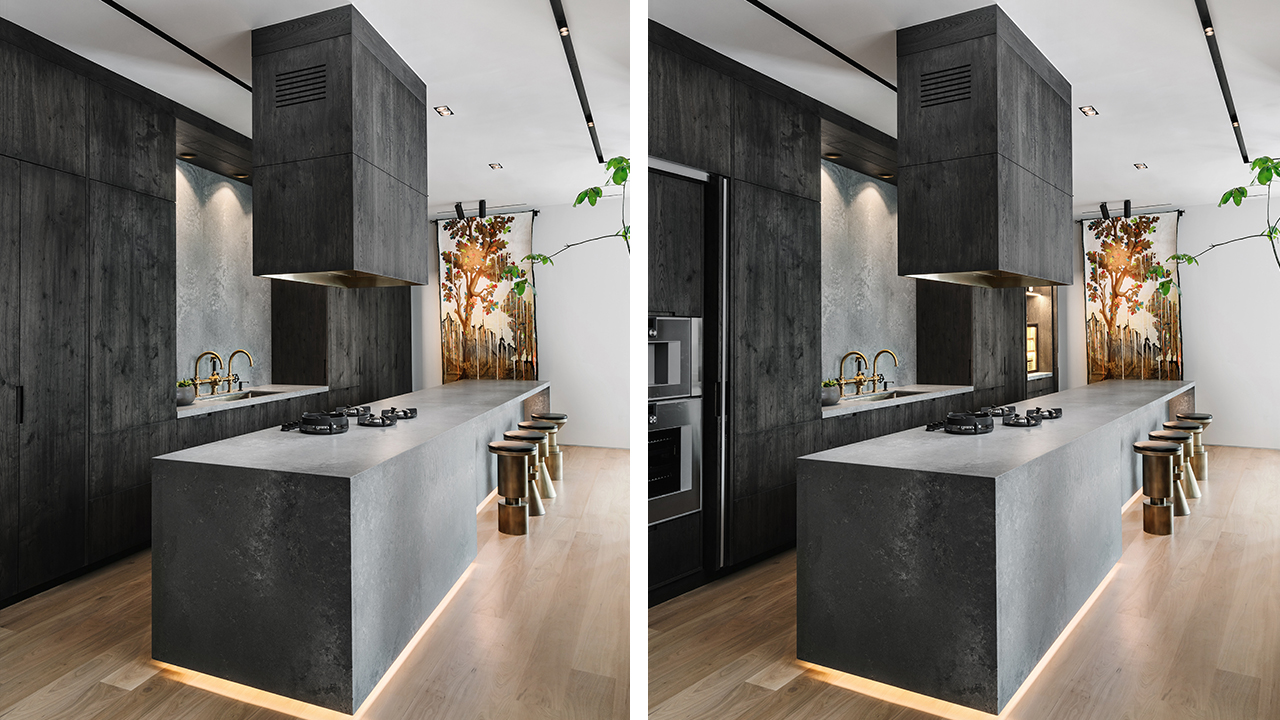
angle_open-and-closed
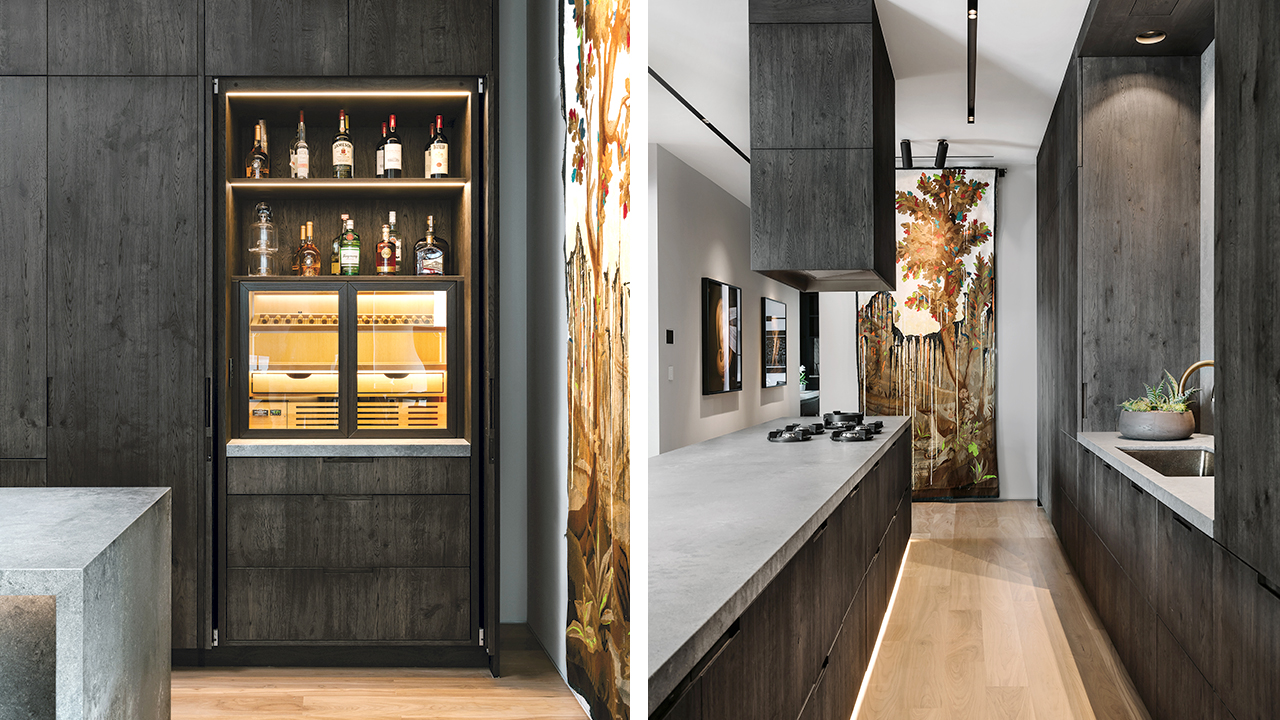
side_view_open
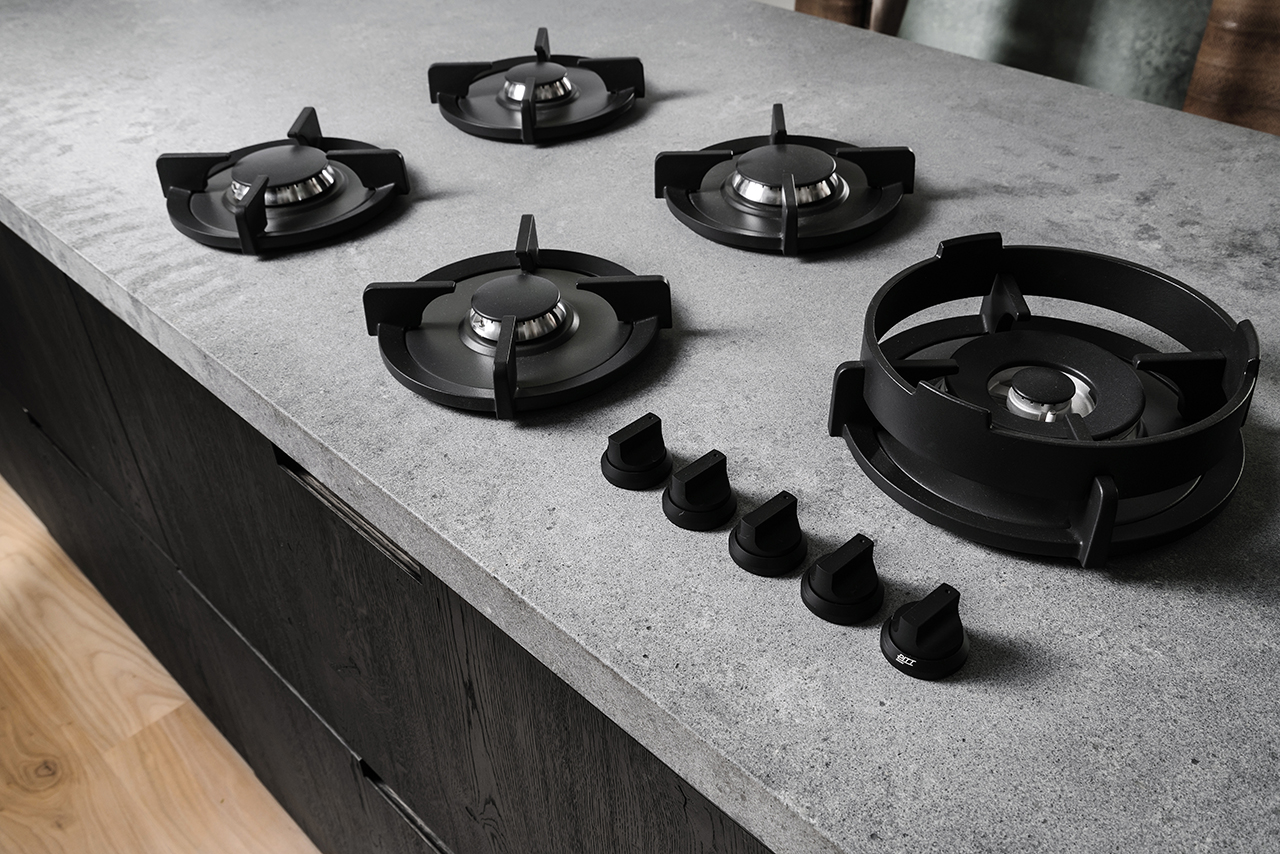
_DSC1225
The request for this project was to create a kitchen that felt architectural rather than noticeably “kitchen.” Steven Cooper, in collaboration with interior designer Thomas Schoos of Schoos Design, chose Form and Aesthetic as the key objectives needed to create a high-functioning kitchen that would allow for caterers and chefs to prepare for large parties and entertaining.
Since the client doesn’t cook but entertains quite a bit, concealed appliances were highly desired. The column refrigerator with freezer and Gaggenau dishwasher were integrated, and a drop-down flat screen television can be hidden from view when not in use. A custom hood that matches the Cooper Pacific Kitchens Custom 861 cabinets hovers over the island, which houses five independent burners from Pitt Cooking. A Gaggenau speed oven and two single ovens disappear behind pocket doors and feature a custom temperature gauge and safety shutoffs in case the doors are ever closed over the units while in operation. A bar area with Thermador Wine Undercounter Refrigerator also vanishes from view.
Balancing the mix of texture in the 351-sq.-ft. penthouse kitchen was the focus. Oak logs, sourced from German forests, give the space an organic, tactile quality, while cement and stone augment the more austere architecture. The Caesarstone Rugged Concrete quartz countertop and backsplash blend with the overall aesthetic, while the Waterworks Regulator faucets and custom bronze sink from Rocky Mountain Hardware enhance the industrial feel.

BRONZE
Contemporary Condo
JENNIFER GILMER & MEGHAN BROWNE
Jennifer Gilmer Kitchen and Bath, Chevy Chase, MD
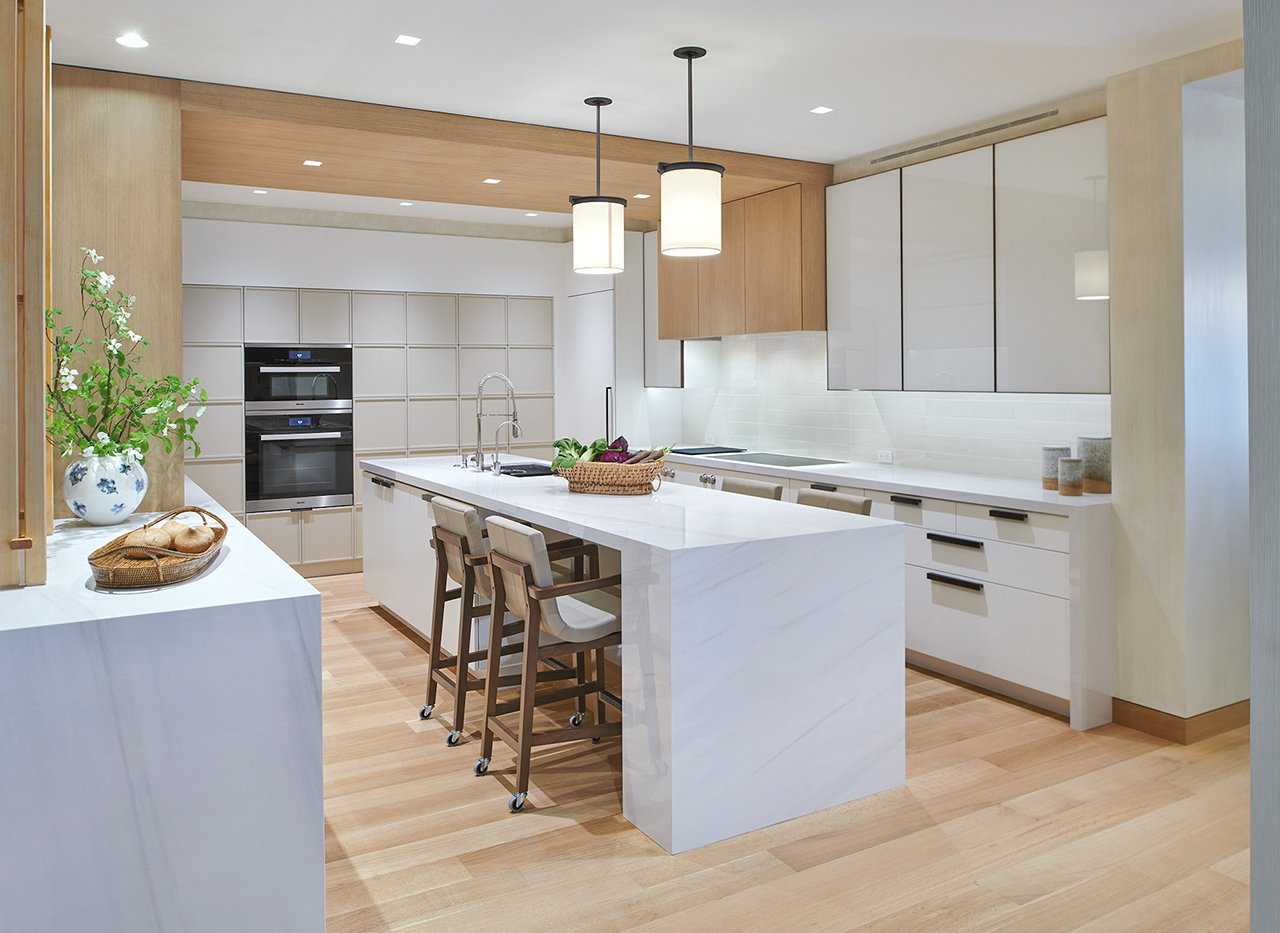
AHP_210423_11_FS
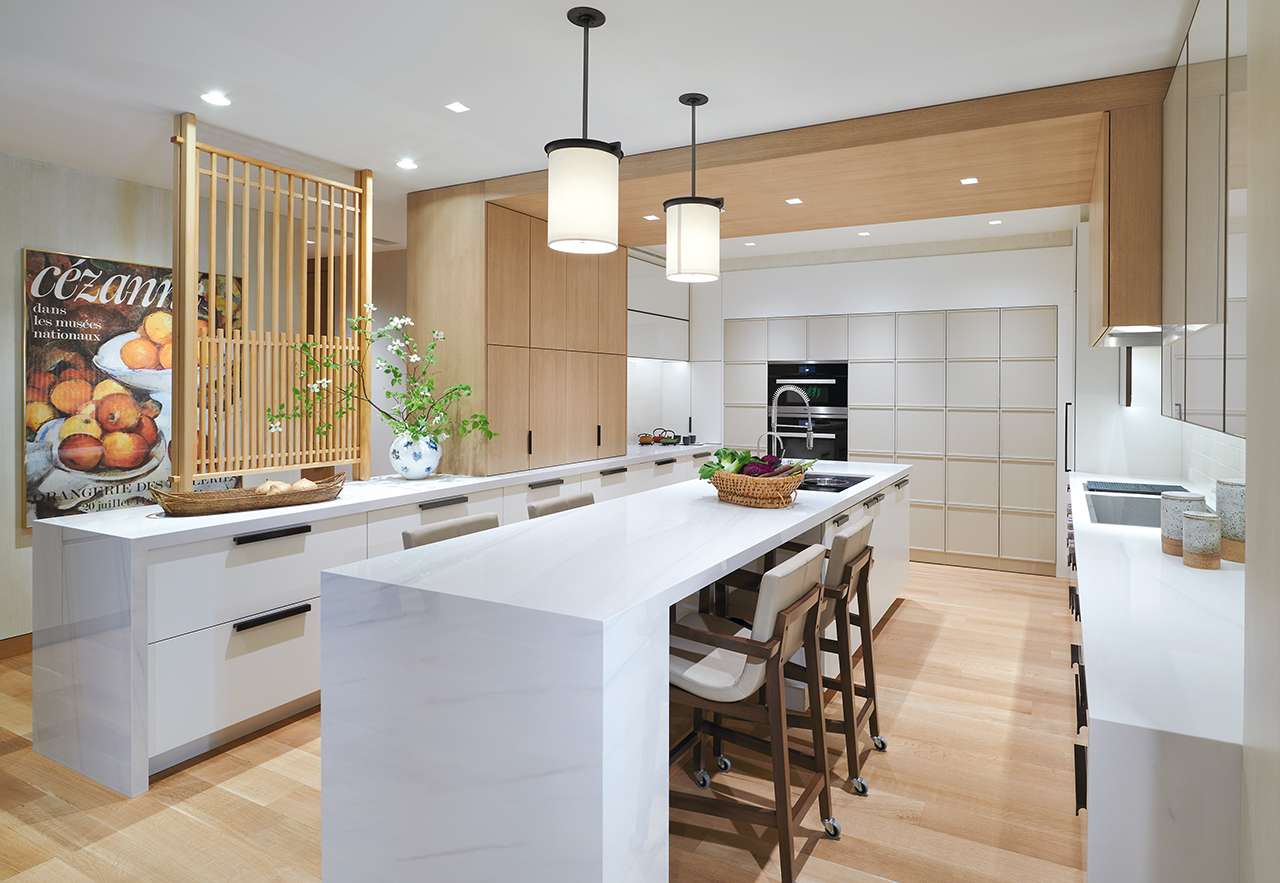
AHP_210423_12_FS
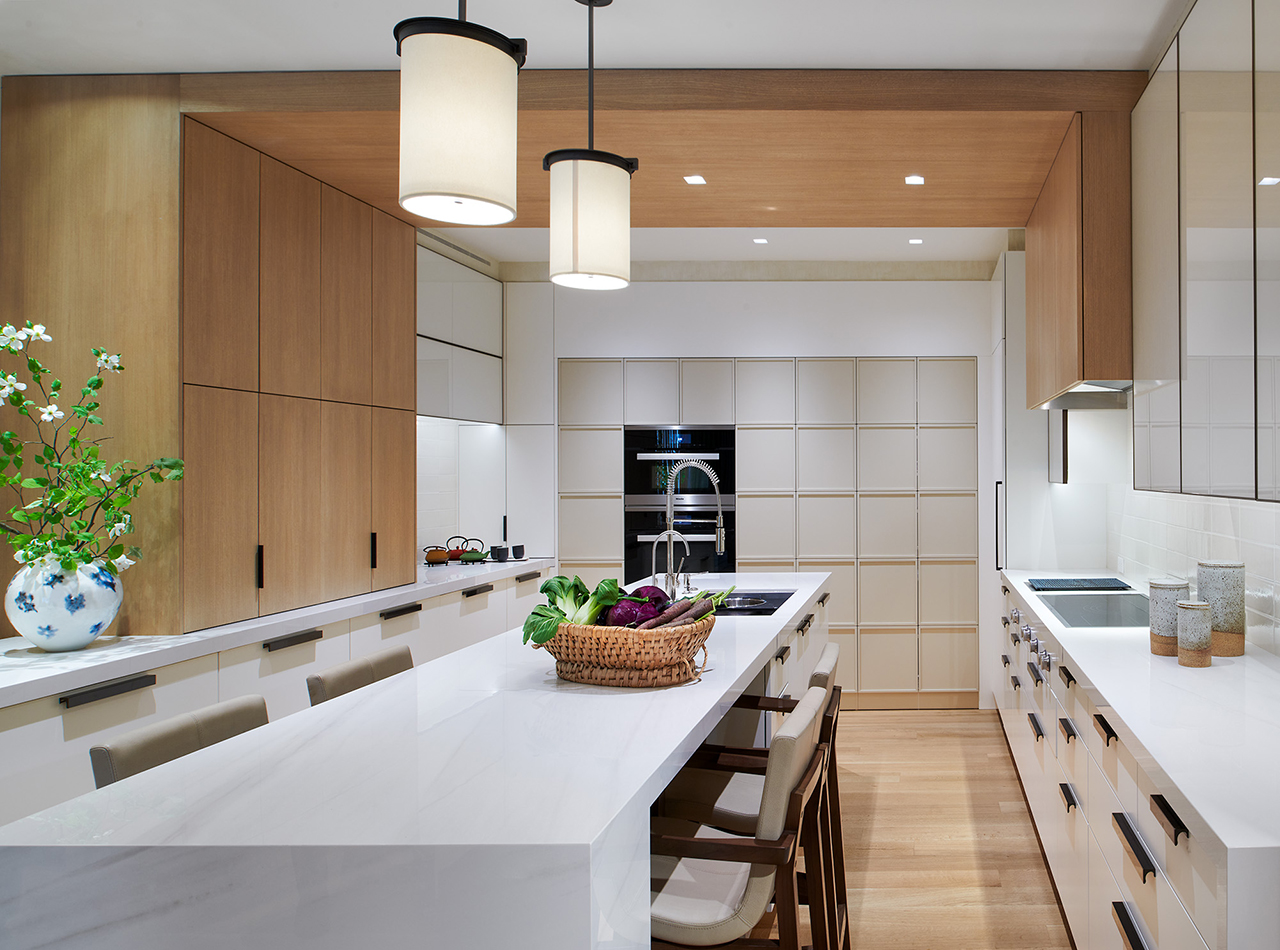
AHP_210423_13_FS
Photos: Anice Hoachlander, Anice Hoachlander Photography
The contemporary style of this full condo remodel needed to be reflected in the kitchen as well, where the desire for more open space and increased size were primary. Jennifer Gilmer and Meghan Browne, working alongside Greg Wiedemann of Wiedemann Architects, focused on these interests, along with having a more functional work triangle and providing seating for four in the 350-sq.-ft. room.
A focal-point back wall blends the Sub-Zero refrigerator and freezer columns into the space, with a narrow pantry finishing the look. On that same wall are a Miele convection oven and Miele Speed Microwave.
The Gaggenau cooktop was moved to the other side of the room so that the wall in the hallway could be reduced, a request of the clients. The Amore hood above was hidden by connecting it to a ceiling panel, with a cabinet of the same color reaching down to the countertop. This cabinet has bi-fold/retractable doors and houses the coffee machine and other amenities.
A peninsula was created to the left of the bi-fold cabinet, which offered a landing space at the end of the hallway.
Contemporary cabinets from Premier Custom Built are featured in white and pale wood tones, topped with Bianco Lassa marble with a waterfall edge. Along the wall, the countertop is met by handmade ceramic tile from Pratt + Larson. The island now houses The Galley sink, paired with a ROHL faucet, with a Miele dishwasher to the side. A Miele warming drawer and Sub-Zero undercounter refrigerator are also featured in the space.
VIEW ALL 2021 KITCHEN & BATH DESIGN AWARDS WINNERS
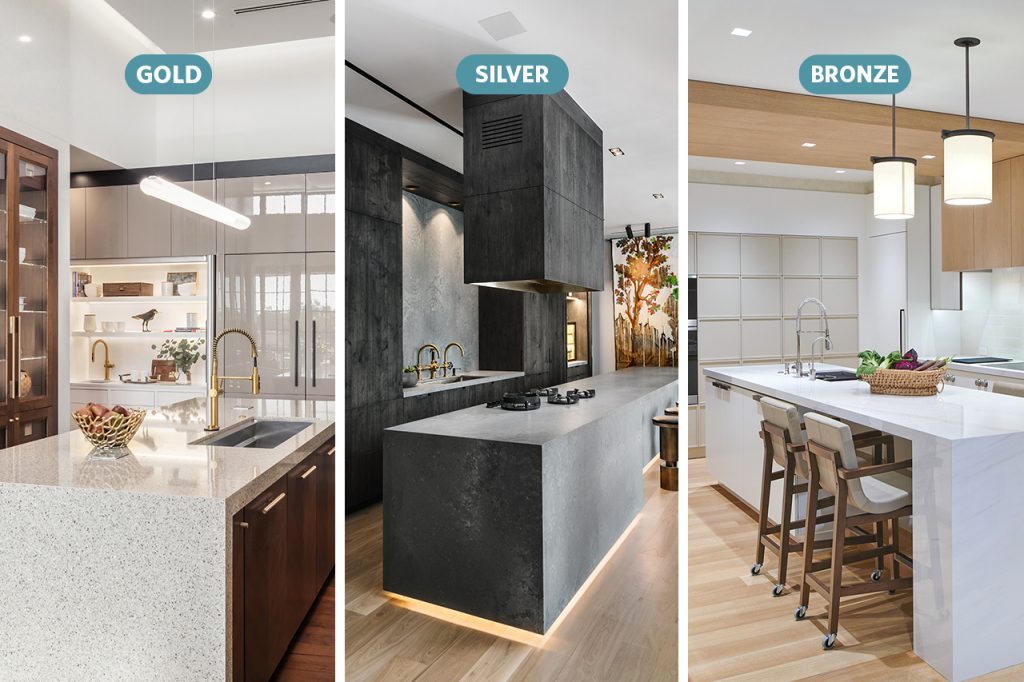
Kitchens Over $225,000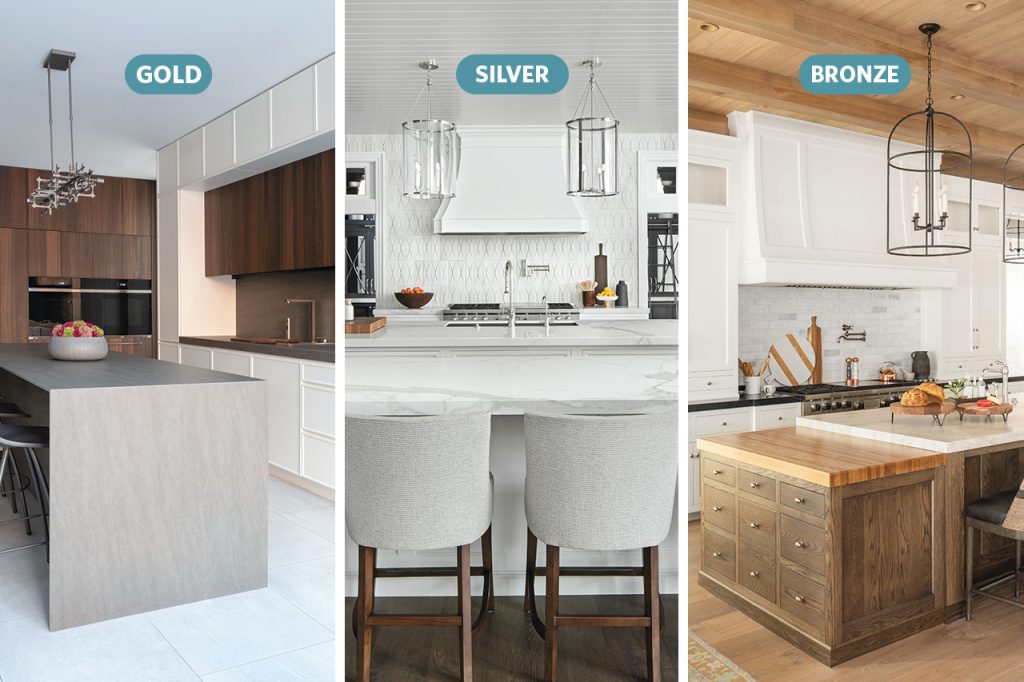
Kitchens $150,000–$225,000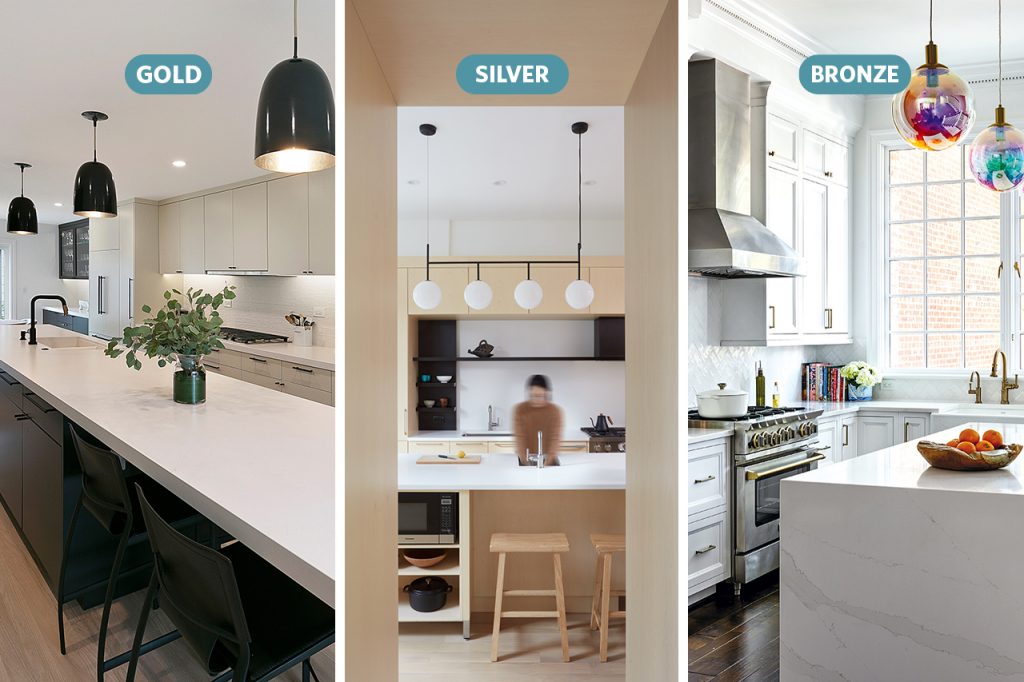
Kitchens $75,000–$150,000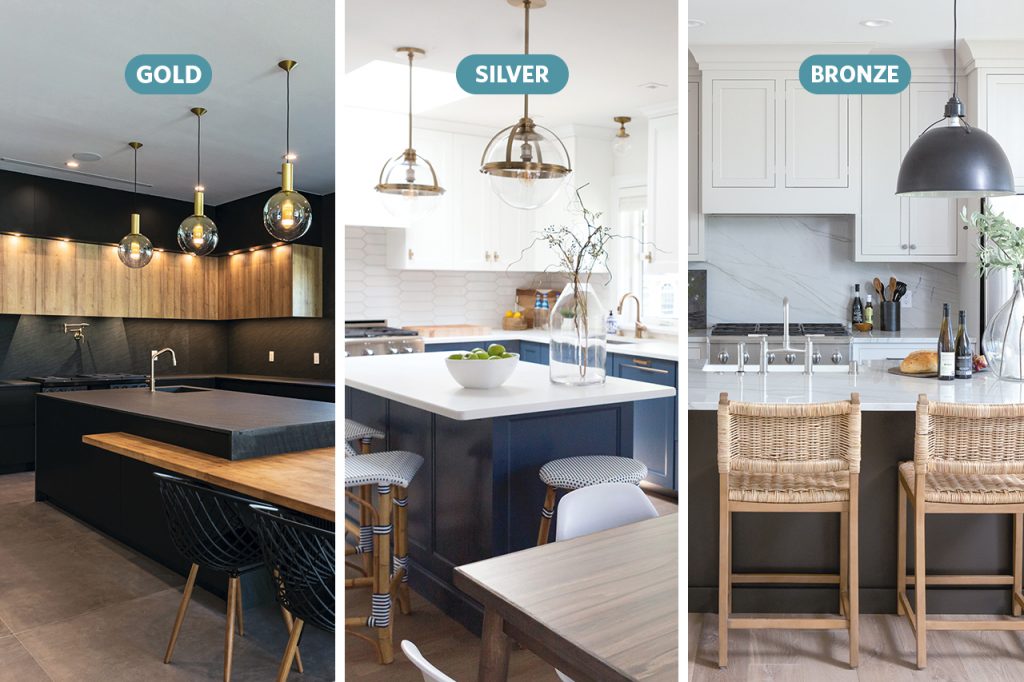
Kitchens Under $75,000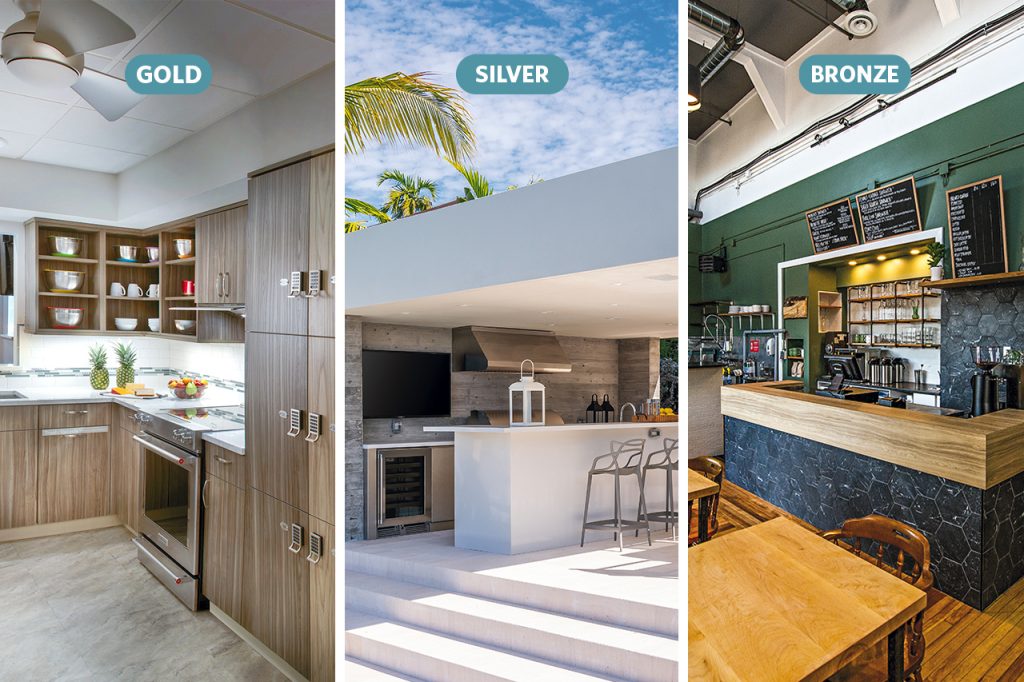
Specialty Kitchens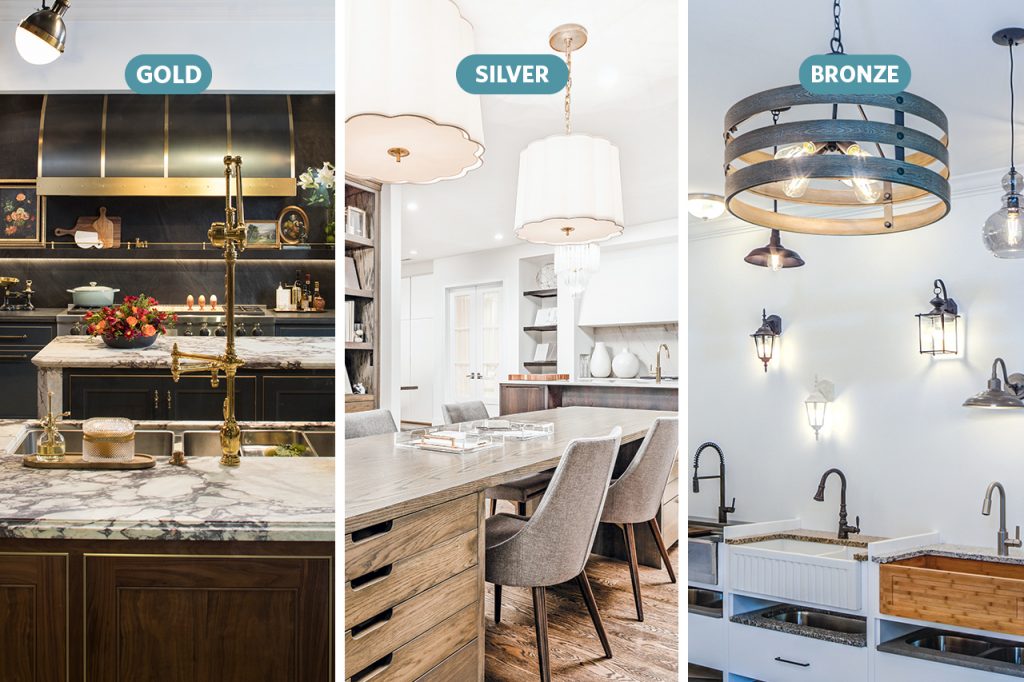
Showrooms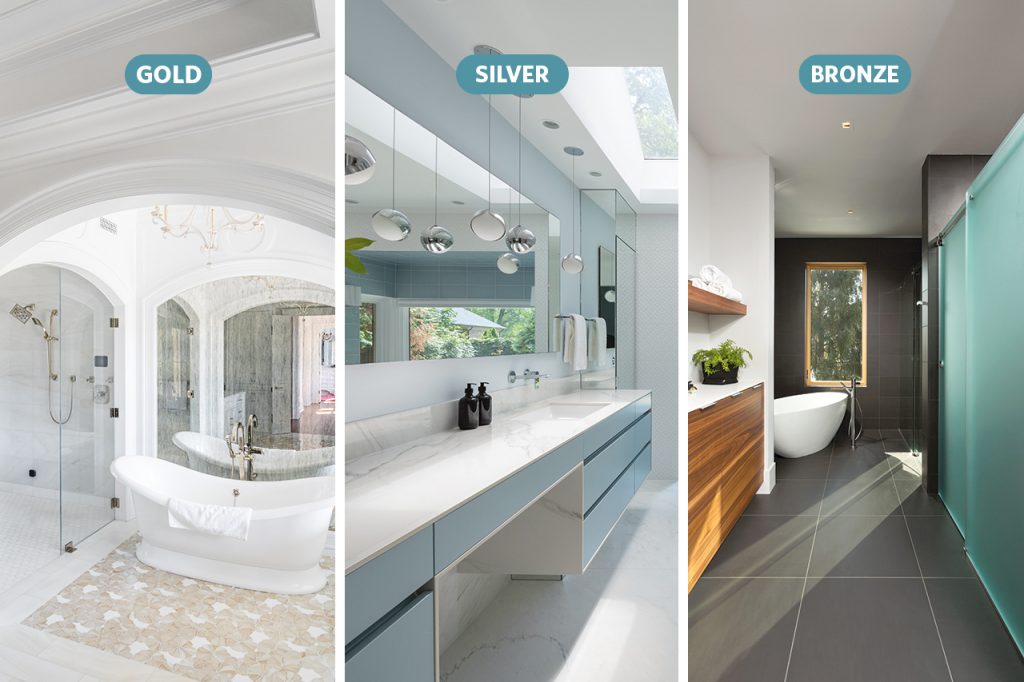
Master Bathrooms Over $100,000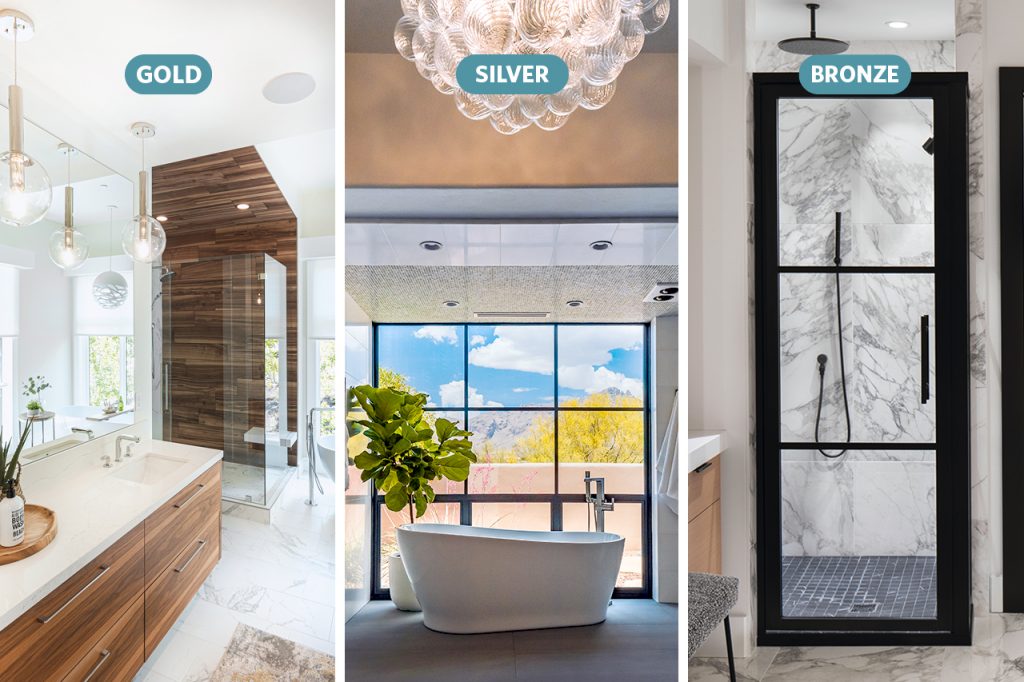
Master Bathrooms $50,000–$100,000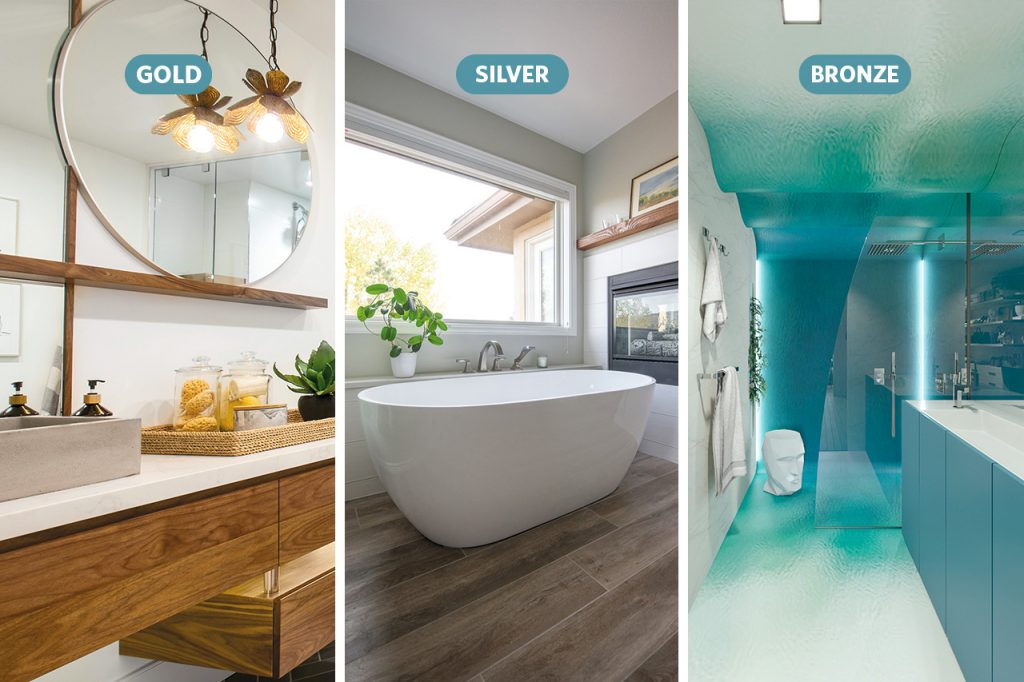
Master Bathrooms Under $50,000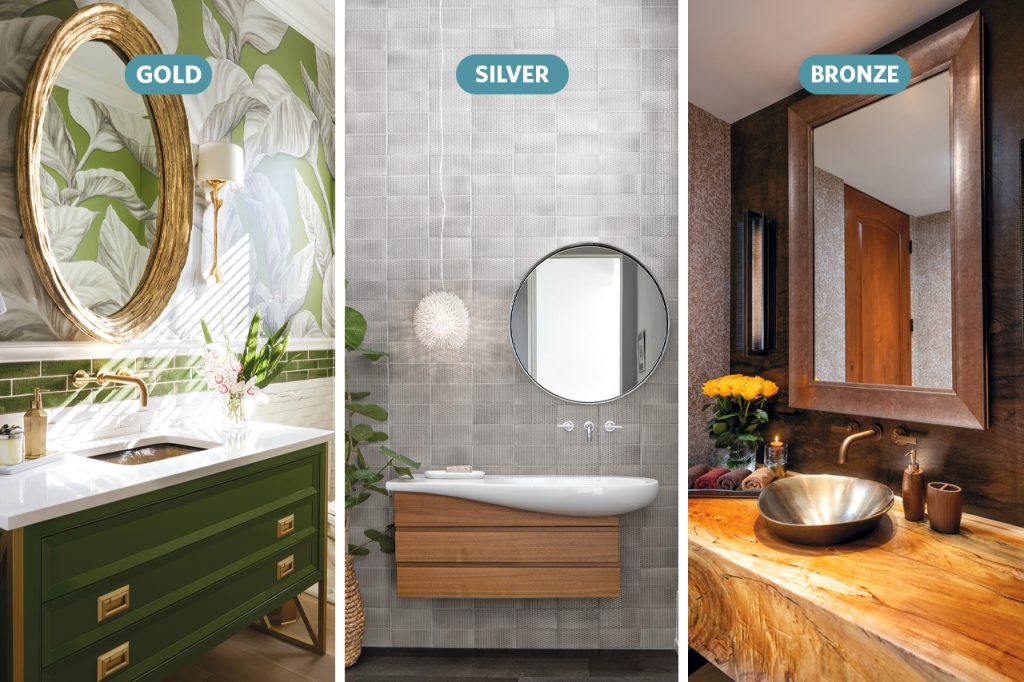
Powder Rooms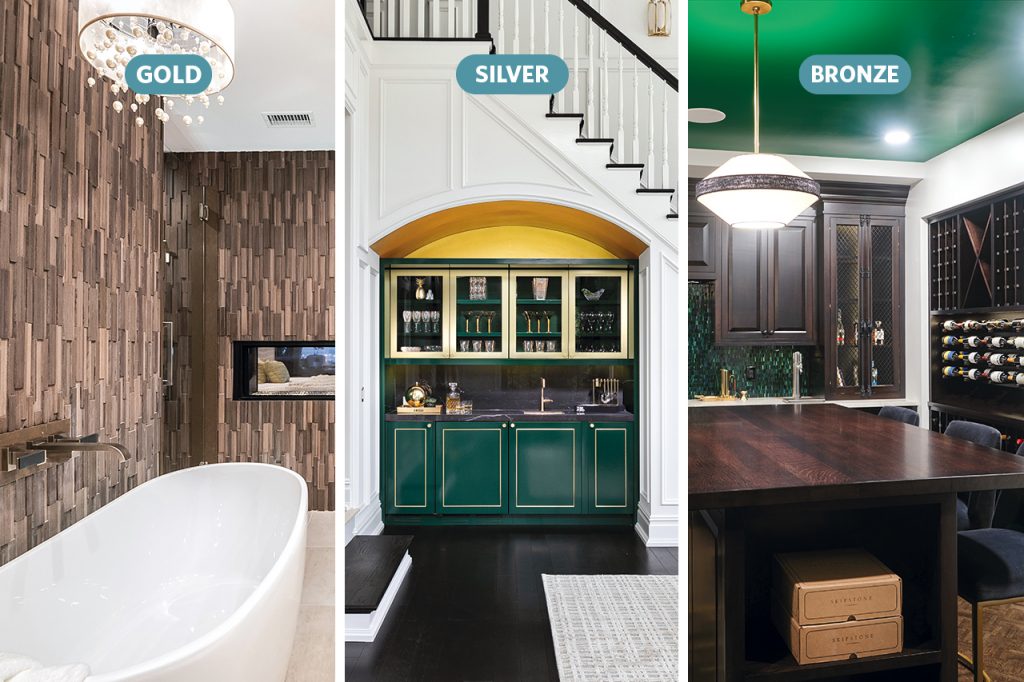
Specialty Projects
The post 2021 Best Kitchens Over $225,000 appeared first on Kitchen & Bath Design News.

